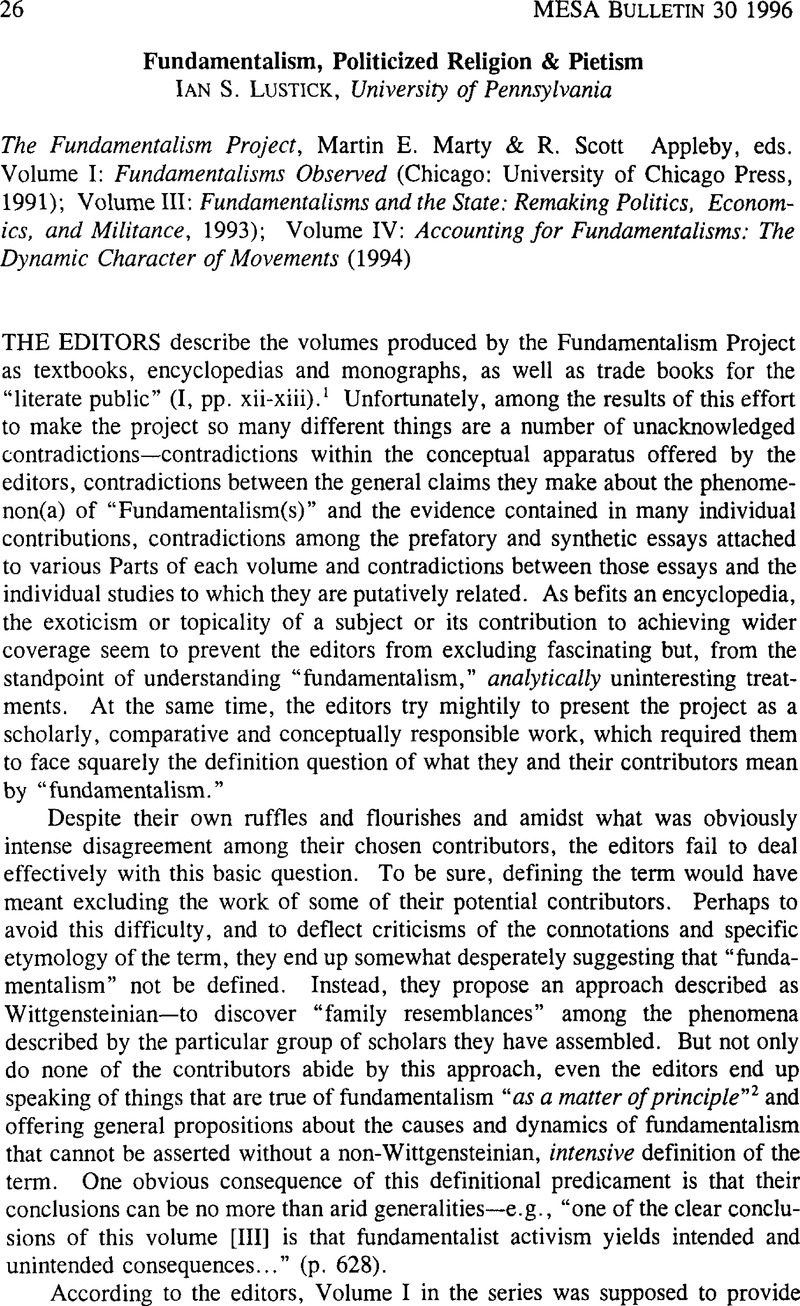Published online by Cambridge University Press: 09 March 2016

1 Upper case Roman numerals in parentheses refer to the volume in which the cited material appears.
2 Volume III, p. 3 (emphasis in original).
3 For reasons of space and because they are generally much less interesting than the substantive chapters, I shall not here have much to say about the introductory and conclusory essays attached to the various Parts of each volume.
4 Lustick, Ian S., For the Land and the Lord: Jewish Fundamentalism in Israel (New York: Council on Foreign Relations, 1988), pp. 4–6.Google Scholar
5 Consider, only as an example, “The Book and the Sword: The Nationalist Yeshivot and Political Radicalism in Israel” by Eliezer Don-Yehiya in Volume IV. In that one essay, he refers to “fundamentalists” with the following qualifying adjectives: religious, radical, national, religious nationalist, pure, activist, radical messianic and halachic. In addition, he also mentions “messianic mystics,” “activist-particularist(s),” “zealots,” “ultranationalists” and “nationalist haredim.”